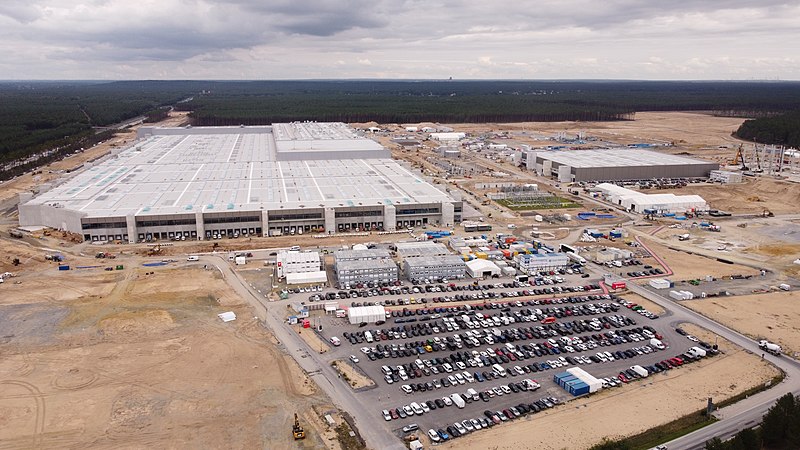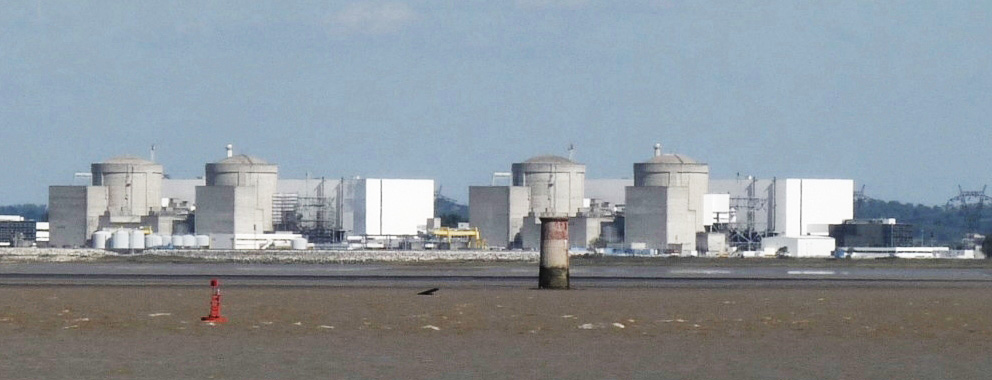|
|

By Jo Nova
Just another spot of climate porn for the industry
Like a bad B-grade movie, nearly every science news story also doubles as an advert for a cult and a carbon tax. Last August three people (three!) died from infections of Vibrio vunificus in New York.
The horror-show microbes are advancing up the East Coast of the US “thanks to climate change”. And they’re racing at the breakneck speed of 30 miles a year. Quick, put up some solar panels!
Some 3,464,228 people died of other causes last year in the USA, but nevermind about that. Let’s remodel the economy anyway.
Olivia Geiger, ScienceLine
Who needs satellites to measure temperatures, we can measure climate change with flesh eating bugs:
A “microbial barometer of climate change”
From 1988 to 2018, infections on the East Coast have increased from 10 to 80 cases a year, according to Archer’s research. The bacteria’s range has moved nearly 30 miles north per year and will continue to do so, even if the climate warms relatively slowly. By 2040, Vibrio vulnificus is likely to be at home in the Long Island Sound.
While very few people contract vulnificus infections, one in five who do are likely to die.
The real crime in this reporting is not the clickbait hyperbole, but the wallpaper intrusion of another disguised advert for a religion and a tax. Implicit in the headline is the “news” that coal causes flesh eating infections, that all climate change is bad, and that nothing remotely, even a tiny bit useful, could come from warming or fossil fuels. Our lives become filled with trivia and irrelevant misinformation, like litter. The big picture goes unspoken.
A far bigger killer is poverty and cold but they rarely get marked on the death certificate. Lower indoor temperatures kill six to twenty times times as many people as heat does. And when the heat comes, air conditioners save around 20,000 lives a year in the US, — if only people can afford to turn them on.
Obviously every medical association is advocating for cheap coal, oil and gas in order to save hundreds of thousands of lives. Yes, no, well… not even close.
Science journalists are the foot soldiers of voodoo.
10 out of 10 based on 84 ratings
8.3 out of 10 based on 26 ratings
9.2 out of 10 based on 17 ratings

By Jo Nova
There are lots of ways to screw up, delay, distort and blur a medical study
And the Principle Trial did all of them.
So here we are, years too late, getting another nanomole of truth squeezed through the distortion field. The Principle Trial gave people ivermectin far too late, and told them not to take it with food, both of which stop it being useful — yet despite that, ivermectin still saved lives and produced a statistically significant benefit. So the researchers sat on the results for a year and a half, then wrote it up with the opposite conclusion. Welcome to modern industrial medicine where the experiments are just a theatre performance. The government pretends to care and set up a big study, while they design it to fail and then hide and twist the results.
The point of doing experiments is not to find the truth but to kill it. If the crowd is baying for answers, what better way to silence them than to say you are doing a long indepth “glorious” study that takes years to complete?
It was naked sabotage…

Viruses multiply exponentially at the start of an infection, so every hour matters. The sooner an antiviral drug is started, the smaller the total viral load will be, and most likely, the shorter the infection. By the time symptoms start the virus has run amok and 1 little virion may have turned into one million virions per ml — headed for a billion. So the Principle Trial designers made sure to express deliver the artificial patented Molnupiravir drug to the randomly selected patients, while the people selected in the ivermectin arm were signed up in slow motion. Pierre Kory has the whole sordid story. One poor man claimed that after he tested positive, he had to wait 11 days for his enrollment form to come through. Ivermectin could hardly “shorten his illness” if he’s already recovered. And conversely it could hardly save his life if he was already dead.
It was so petty (but thoroughly so) that the information forms for the Molnupiravir test told patients medicine would be delivered the “next day”, and patients were given the option to pick up the medicine from the pharmacy even faster. But in the Ivermectin arm the words “next day” were deleted — the medicine would just be delivered (sometime).
The excellent c19ivm team listed the differences in the trial design, and practically name a hundred different kinds of bias. It’s as if no stone was left unturned to get a “null” result on ivermectin.
As Pierre Kory says so scathingly — the same person designed both trials:
“The reason why the above table is so powerful is that the two trial designs were by the same Principal Investigator at the same “august” institution. Why such discordant designs? Why did Butler (notice my refusal to call him Professor), when studying ivermectin, use such a low dose on an empty stomach for such a short duration (no other anti-viral is ever used for less than 5 days), so late in the disease (up to 14 days?), in more mildly ill patients?”
Despite the sabotage, the Epoch Times reports ivermectin treated patients died at less than half the rate:
People who tested positive for COVID-19 and took ivermectin as a treatment recovered faster than a comparison group…
The time to self-reported recovery was a median of two days faster among the ivermectin recipients, according to the large UK study.
People who received ivermectin were also less likely to be hospitalized or die, with 1.6 percent of ivermectin recipients being hospitalized or dying versus 4 percent of the comparison group, which received typical care, which in the UK is largely focused on managing symptoms.
About 2,000 people were given ivermectin (of a sort) and about 3,000 were given “usual treatment”. 11 people died in the normal treatment arm, but only 2 died when given ivermectin.
The biggest crime was that for three years people were denied the best treatment they could get.
Statistical games

As Pierre Kory points out, the results must have looked so good they couldn’t possibly release them. Apparently they suddenly needed to extend the trial for a whole years followup and create some excuse about how ivermectin didn’t make some arbitrary hazard ratio bar they set post hoc.
Kory remarks that in their results of “time til recovery” the probability ivermectin was superior was found to be >.999. Yet their conclusion was that “Ivermectin is unlikely to provide clinically meaningful treatment” (especially if you want to keep the hospitals full eh?) Furthermore they say, it’s not worth doing more trials. (Big Pharma will be happy about that).
The new “Hazard Ratio Bar” they invented is chicanery:
So the authors concluded that this finding was unlikely to provide a clinically meaningful result? What? I want to be brief here, but this is statistical chicanery – to support this statement they instituted an almost impossible bar to clear, that of a “pre-specified hazard ratio level that must be greater than 2.0.” I have never heard of this. A hazard ratio does not need a pre-specified level. If the HR is > 1.0, and it is statistically significant, it is a robust finding. The HR for ivermectin was a statistically significant 1.15! But it was not 2.0, so .. dismiss the result? Whatever.
Wow. just wow. Another way of saying the above is that they literally designed the statistical threshold for effectiveness in such a way that, even if ivermectin was found to be effective (which they found), if it was not like, am (arbitrary) “super large magnitude” of efficacy, it should not be recommended or thought effective. What? — Pierre Kory
Despite the extraordinary lengths they went to, ivermectin still helped. Imagine what it could have done if it was used properly?
In another study done in Brazil – ivermectin reduces deaths by 92% for 10 cents a week. It could have saved so many…

c19ivm.org
REFERENCE
Hayward et al (2024) Ivermectin for COVID-19 in adults in the community (PRINCIPLE): an open, randomised, controlled, adaptive platform trial of short- and longer-term outcomes, Journal of Infection on Feb. 29 2024.
Graveyard Art by Syaifulptak
Drowning clock by 51581 from Pixabay
9.9 out of 10 based on 118 ratings
Saturday
10 out of 10 based on 13 ratings
By Jo Nova
The Vulkangruppe (Volcano Group) activists have claimed responsibility for sabotaging a pylon that supplied power to the Tesla Gigafactory in Germany. The factory that makes half a million EVs a year had to close Tuesday and send 12,000 workers home. About 2,000 local homes also lost power.
Electricity may not be restored until March 17th and Pierre Goslin at NoTricksZone reports the bill is now estimated to be “over half a billion euro”.
Apparently the radical-conservationists thought setting fire to a pile of tyres at the base of a high voltage tower was a way to free the forest and the workers from a capitalist tyranny.
Shortly after, an organization known as the Volcano Group (Vulkangruppe) claimed responsibility for the fire online. “We sabotaged Tesla today,” the far-left environmental group stated in an open letter that also accused Tesla CEO Elon Musk of being a “techno-fascist.”
The letter went on to criticize Tesla’s implications in driving predatory capitalism, worker exploitation, environmental degradation and modern surveillance technology, which is why. The stated goal was to “bring Tesla to its knees.”
For some reason media groups have not made much of a fuss about this. If right wing petrol-heads burnt down critical infrastructure instead this would be the lead story on 1,000 channels.
The arson was very much a premediated terrorist act. The Vulkangruppe wrote a 2,500 word essay about how awful Tesla was because it “consumed both natural resources and labour and was neither ecological or sustainable.”
Indeed The Guardian claims EVs are under attack because they might not be very green:
Electric cars have come under increasing attack by environmental activists, in particular over concerns that their production leads to higher emissions than the manufacture of internal combustion engine cars and that the production and recharging of electric car batteries constitute environmental burden. In targeted attacks around Europe, including in Germany, electric cars have had their tyres slashed or deflated.
It’s an interesting admission by the Guardian editors, about ten years too late. And they don’t exactly have a lot of evidence. They include a link to the tyre slashers who specifically targeted SUVs for “climate action”, but in those incidents the only electric car tyres that were slashed were cut by accident.
 Tesla Gigafactory Brandenberg, Germany. | Photo by Michael Wolf (Webseite) Locals in Brandenberg have been protesting about the plans to expand the Tesla factory which would require cutting down 100 hectares of forest. But according to one Tesla fan, the forests the terrorists want to save are plantation trees anyway not native forest.
Elon Musk said:
These are either the dumbest eco-terrorists on Earth or they’re puppets of those who don’t have good environmental goals. Stopping production of electric vehicles, rather than fossil fuel vehicles, ist extrem dumm.
This is what you get when the media promote one-sided crazy political lies and suppress sensible voices for 20 years. So these might well be home-grown hippy crazies. But let’s not forget that there are foreign actors which sell competing EVs and speak the language of Marxism. They might benefit from winding up the local Antifa crowd.
9.7 out of 10 based on 87 ratings
9.9 out of 10 based on 8 ratings

By Jo Nova
The climate hypnotists tell you every kind of weather is climate change
100 years from now university students will write exam essays on the mass psychosis that overcame climate scientists in the early part of the century.
Here, for example are experts telling us with a straight face that winter cold snaps are also a sign of man-made climate change.
True seers can see climate change everywhere:
Beatriz Monge-Sanz , The Conversion*
One less obvious consequence of global warming is also getting growing attention from scientists: a potential increase in the intensity and frequency of winter cold snaps in the northern hemisphere.
Naturally, this “potential” increase was expected, even though they didn’t think to mention it. Even if they told us our children won’t know what snow is.
Some of the mechanisms that lead to their occurrence are strengthened by global warming. Key climate mechanisms, like exchanges of energy and air masses between different altitude ranges in the atmosphere, are evolving in ways expected to cause an increase in both the intensity and duration of cold snaps.
They expected it right after it started happening.
Students of psychics will note the princelings of climate science cover their bases in the same ambiguous terms — the weather can be very social and outgoing, but at times shy, you know. And key mechanisms, which we won’t name, at altitudes that are different, may be evolving. See what I mean?
These exchanges of energy and air masses “link to the behaviour of a region in the high atmosphere called the stratosphere.” says Ms Beatriz Monge-Sanz, mysteriously, explaining nothing at all and everything all at once.
I defy anyone to unpack the “mechanisms”. Somehow extra CO2 causes Sudden Stratospheric Warming (SSW) at the poles, and they can’t quite explain how. But they know, post hoc, that SSW’s have increased in the last 40 years, so it must have been “climate change” because that increased too. And if only their supercomputers were a bit more super, they might be able to actually predict these SSW events in advance and all. But they can’t, and they even admit that.
Monge-Sanz is a senior researcher in Physics at Oxford.
I’d like to ask her: What weather would show us that climate models are wrong?
The tally of failure continues: the hot spot is still missing, the climate models can’t predict the climate on a local, regional, or continental scale, they don’t know why global warming slowed for years, They can’t explain the pause, the cause or the long term historic climate movements either. Measurements of satellites, clouds, 3,000 ocean buoys, 6,000 boreholes, a thousand tide gauges, and 28 million weather balloons can’t find the warming that the models predict. In the oceans, the warming isn’t statistically significant, sea-levels started rising too early, aren’t rising fast enough, aren’t accelerating, nor are warming anywhere near as much as they predicted. Antarctica was supposed to be warming faster than almost anywhere but they were totally wrong. The vast Southern Ocean is cooling not warming. And the only part of Antarctica that’s warming sits on top of a volcano chain they prefer not to tell you about.
No wonder expert climate modelers don’t want their own pensions bet on climate models.
Students of 20th Century Climate Dogma 101 will marvel at how long a stupid, skillless, hypothesis kept rolling years after it was proven wrong.
Image by Wilfried Pohnke from Pixabay
____________
*The Conversation banned skeptics so it’s hardly a Conversation is it?
9.9 out of 10 based on 103 ratings
9.2 out of 10 based on 12 ratings
By Jo Nova
It’s like the West has forgotten how to build things…
The nuclear debate in Australia is 100 years behind the rest of Western Civilization. Like children, we banned nuclear power before we even built one. We could afford to strut in our anti-nuke super-cape because we were swimming in 300 years worth of coal. (Now we want to ban that too.)
Somehow, despite the burden of all that coal, the idea of nuclear has grown legs, but the rest of the world must be laughing at us. The US built the first reactor way back in 1957, and 50 years ago the French built 56 reactors in just 15 years and most of the reactors were built in 6-8 years.
But our experts in the CSIRO think it will take us 14 years to even build a small one.
Even if the nuclear ban was lifted tomorrow and a decision immediately taken to commission a nuclear reactor, CSIRO estimates the first SMR would not be in full operation before 2038, ruling it out of “any major role” in reaching net zero emissions by 2050.
Today we have computer aided design and supercomputers with AI, but we can’t even build a 50 year old copy of a French plant as fast as the French could in an era when homes still had slide rules.
If we ask President Macron nicely, perhaps he’ll even give us the old plans?
The first 910 MW reactor at Blayais Nuclear Power Plant was built from 1976 to 1981 and is still operating today. The three other turbines were finished by 1983. So the ancient 1970s French industry could build a 4GW nuclear plant in 7 years.

It produces about 26,000GWh of electricitie each year with a capacity factor of about 75%.
Brown coal power is still cheaper.
10 out of 10 based on 97 ratings
9.5 out of 10 based on 13 ratings
By Jo Nova
In a democracy the Court of Public Opinion is (still) the highest court
Donald Trump’s name can stay on the ballots.

It’s one of those rare moments in 2024 when something makes sense. All nine justices of the US Supreme Court have decided that the largest jury in the world should be allowed to judge for themselves who they want to have as President.
The Colorado Supreme Court had decided that Donald Trump was too naughty for people to vote for, even though he hadn’t been charged or convicted of leading an insurrection of horned people (or any one else) to overthrow the US government. The votes of a few state officials would therefore overrule the votes of millions potentially. And the whole idea of being innocent until proven guilty was tossed out the window.
The Court of Public Opinion is the only one that matters in a democracy. If there was free speech and a free media, crimes will be investigated, and the evidence put on display
As The Epoch Times said — it has never happened like this before:
Keep reading →
9.7 out of 10 based on 108 ratings
9.4 out of 10 based on 14 ratings
10 out of 10 based on 9 ratings
 … By Jo Nova

I’m looking forward to spending three days at the Triple Conference in Albury from March 15 -17th. Topics include looking at ways to get the Government out of our lives, get cheap energy, returning manufacturing, rule of law, management of the Murray Darling, I’ll be speaking and so will David Burton of the Inigo Jones long term weather forecasting and the failures of the BOM. Other speakers include three Senators: Malcolm Roberts, Ralph Babet, and Alex Antic, plus two sitting MPs, many former MP’s like Gary Johns, Warren Mundine, plus also Augusto Zimmerman — it’s big!
The Gala Dinner on Saturday is called Nyet Zero.
It’s being organised by Topher Field of AussieWire.
This is the first time the three conferences have been combined: Big Ideas for A Better Australia, the Friedman Conference for libertarians, and the Church and State conference.
The conference itself is under $300, the Conference plus Gala Dinner is about $550, and there is a VIP option too. Tickets here.
9.9 out of 10 based on 62 ratings
8.8 out of 10 based on 16 ratings

By Jo Nova
Next step: sustainable human steak?
They don’t mention the “sustainable” word, but you know they want to. Right from the start they’re selling it to us:
Ethically, cannibalism poses fewer issues than you might imagine. If a body can be bequeathed with consent to medical science, why can’t it be left to feed the hungry?
Why can’t we feed our bodies to the homeless indeed, apart from Creutzfeldt-Jakob disease, prions, parasites, heavy metals? And if cannibalism pops up on the menu often enough, who knows what other problem will pop up on the radar? Things at the top of the food chain (and we are at the top) tend to accumulate all kinds of unwanted chemicals, like lead, PCBs, and pollutants.
Not to mention the spiritual questions and the mental health issues. Who knows? Relatives might feel a bit miffed if Aunty Betty was carved up for canapes and offered up to the crowd at the local alcoholics shelter.
Welcome to dystopia. We can devalue human lives, but think of the cows we’ll save!
And the CultureWar continues
Tut. Tut. Tut. New Scientist gently chides us for being the sort of modern prejudiced people who think cannibalism is taboo. Its just your colonial roots that do that to you, right?
If you don’t like cannibals you are just a racist:
Our aversion has been explained in various ways. Perhaps it is down to the fact that, in Western religious traditions, bodies are seen as the seat of the soul and have a whiff of the sacred. Or maybe it is culturally ingrained, with roots in early modern colonialism, when racist stereotypes of the cannibal were concocted to justify subjugation. These came to represent the “other” to Western societies – and revulsion towards cannibalism became a tenet of their moral conscience.
Once human bodies are reduced to being meat to feed the poor, euthanasia is almost a gift to the world, really. And science is just, well, one of many ideologies, not something special.
The New Scientist output is just another article chipping away at the pillars of Western Civilization. The fact they don’t even consider pollutants and diseases, nor the soul sapping mental health issues is just embarrassing for a supposedly “scientific” magazine.
For whatever its worth, after half a billion years of evolution, predators almost never eat other predators, and most species don’t eat their own kind. Perhaps there is a reason…
9.6 out of 10 based on 84 ratings
9.3 out of 10 based on 13 ratings

By Jo Nova
Not only has the bubble popped, but everyone knows it’s popped.
After ten years, Apple abandons the fantasy of EV’s
Apple is believed to have spent “billions” since 2014, trying to develop an EV in the semi secretive “Project Titan”. They reportedly had 2,000 employees working on it, but this week, they dropped it like a hot rock, and, by golly, investors were relieved.
It came as a big surprise. Two years ago Apple was so serious it hired some veterans from Lamborghini. In January Apple was hiring drivers for its autonomous testing fleet. A few weeks ago the project was live but being downgraded to a less autonomous machine and delayed until 2028. But this week, employees are being laid off, and Apple is moving many of the workforce to AI.
Most commentators saw this as a cost cutting exercise due to competition from China, but some are seeing this as a bigger sign:
“It does not get much more shocking than this,” said Roger Lanctot, automotive analyst at TechInsights. “If you have more money than God and you decide not to pursue a particular concept it is a massive rejection of this value proposition.”
—Reinhardt Krause, Investors Business Daily
Now everyman and his dog is getting out
This news is not just about the failure of the autonomous driverless vehicle. It comes on top of the news that practically everyone in the auto industry is stepping away slowly. Mercedes Benz is pulling back on EV ambitions. They were aiming to get to the heavenly 100% electric zone by 2030, but now they’re bringing in a new combustion model in 2027. They say Europe won’t be ready by 2030 to go fully electric, and they are concerned about the lower than expected demand for EVs.
Aston Martin is also delaying their electric car program and explain it’s just because people don’t want them:
Aston Martin boss Lawrence Stroll has confirmed the reason for the delay was simply a lack of consumer demand for the latest EV model at this stage. — Express. UK
Tesla, the EV giant, still survives but the deceleration is breathtaking:
Even Tesla, the pioneer of the EV revolution in the US, has warned its rate of expansion will be “notably lower” this year. Domestic EV sales growth will decelerate to 11 per cent next year from an estimated 47 per cent growth rate this year, according to a forecast by UBS.
It’s rare in life to watch a bubble unravel so fast around us
In the middle of 2023 American car sales yards started to fill with EV’s that weren’t selling. Then the repair costs started accumulating and EV’s were becoming hard to insure, the second hand sales value fell. Then came the spectacular Luton Airport fire where 1,200 cars were cremated and an airport terminal collapsed. By late October the quarterly reports and the terrible earnings were piling up. VW orders were down 50%, Ford was losing $38,000 on every car. In early November one of the largest rental car companies in the world announced they were selling a third of their EV fleet because EV’s cost more to repair and customers didn’t want to rent them anyway. And that was before Americans found out that EV’s can’t be charged if the temperature gets below zero, and cars were stuck for days in a cold snap in Chicago.
The bubble was inflated with Big Government money. Despite all these failures and the obvious news that EV’s are not yet, and may never be, cheap and convenient, many governments still want to force people to buy them in the hope of slowing the storms in 2100.
Image by ThankYouFantasyPictures
9.8 out of 10 based on 111 ratings
9.6 out of 10 based on 16 ratings
|
JoNova A science presenter, writer, speaker & former TV host; author of The Skeptic's Handbook (over 200,000 copies distributed & available in 15 languages).

Jo appreciates your support to help her keep doing what she does. This blog is funded by donations. Thanks!


 Follow Jo's Tweets
Follow Jo's Tweets To report "lost" comments or defamatory and offensive remarks, email the moderators at: support AT joannenova.com.au
Statistics
The nerds have the numbers on precious metals investments on the ASX
|


























Recent Comments